Once you’ve done the hard work of finding a non-toxic mattress you love, you’ll want to protect it. Before you rush into buying any old mattress protector or pad, though, it’s good to know which certifications to look for and why they matter.
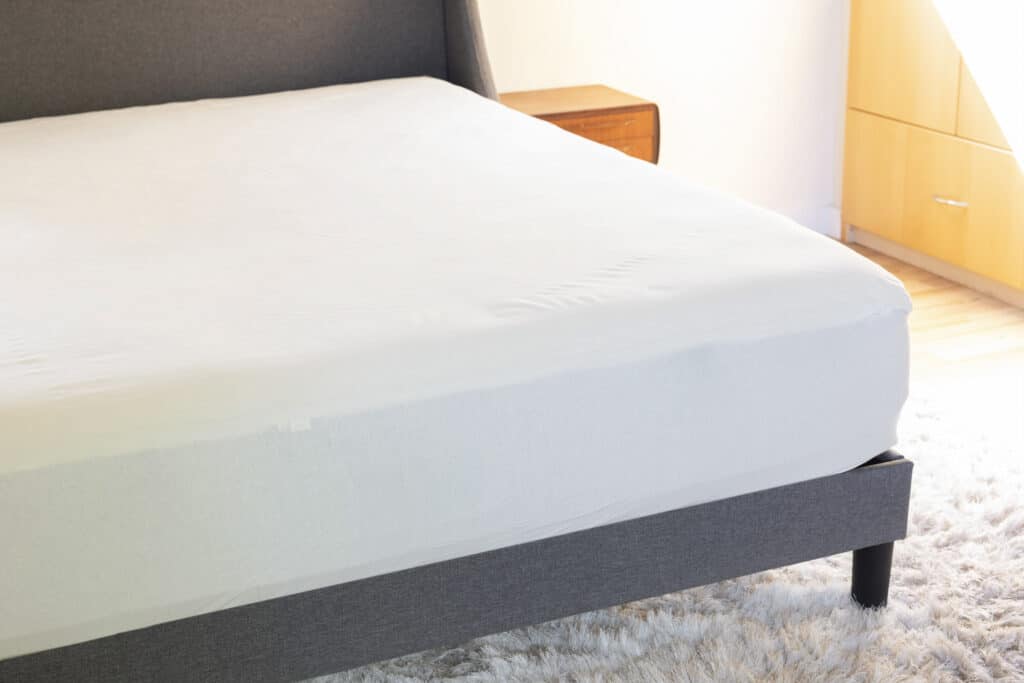
Table of Contents
Most mattress pads and protectors contain synthetic materials and are made with hazardous chemicals. And, as with most bedding, some less than sustainable pads and protectors are heavily greenwashed.
With hundreds of certifications available to bedding manufacturers, it’s hard to know which actually mean something. Here’s the breakdown of the green certifications that actually matter when buying a mattress pad and protector.
For quick reference, here are the top tier, second tier, and third tier certifications I look for when assessing the health, safety, and sustainability of mattress pads and protectors.
| Top tier mattress pad and protector certifications | ||
| GOTS | ||
| eco-INSTITUT | ||
| Second tier certifications | ||
| USDA Organic | OEKO-TEX Standard 100 | B Corp |
| Formaldehyde-Free Verified by UL Environment | Made in Green by OEKO-TEX | MadeSafe™ |
| bluesign® | kbT | Climate Neutral Certified |
| Third tier certifications | ||
| Fair Trade | EcoWool | Greenguard Gold |
How I prioritize green bedding certifications
No single pad or protector will carry all of the certifications. Some certifications pertain to materials only, while others apply to materials, manufacturing processes, and social and environmental sustainability.
For these reasons, when recommending products at Leaf Score (and when choosing products for my own family and home) I typically look to mix and match the best certifications relevant for a particular product.
I strongly suggest looking for GOTS certification for pads and protectors, ideally for U.S.-grown or European cotton. For wool, I’d look for GOTS certification, ideally for U.S. or European wool.
For protectors that contain a waterproof membrane of some sort, I also suggest looking for:
- Credible GOTS certification (as we have with our Essential Mattress Protector)
Or, at minimum,
- Greenguard Gold or Oeko-Tex Standard 100,
Plus
- Formaldehyde-free and USDA Organic certification for any cotton components.
My approach when assessing the certifications of any bedding is to ensure those top level green and non-toxic certifications are present and then mix and match the other seals depending on the material and type of bedding.
Regardless of the materials and type of pad or protector, I recommend looking for companies:
- With B Corp, Climate Neutral Certified, and Fair Trade status
- That operate out of GOTS certified factories
- That use eco-friendly packaging and have a reasonable return policy.
Let’s take a look at the most meaningful green certifications for mattress pads and protectors.
Global Organic Textile Standard (GOTS)
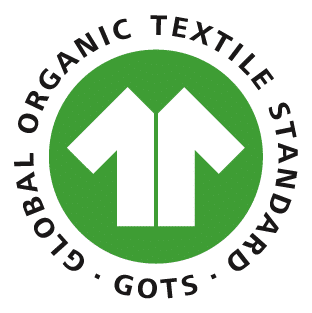
The Global Organic Textile Standard (GOTS) covers materials, manufacturing processes, and some elements of social and environmental protection.
While this is arguably the best green certification for mattress pads and protectors, it’s not without its problems.
GOTS is a voluntary global standard that covers the entire post-harvest manufacturing process for products made with certified organic materials. Pads and protectors can be certified using GOTS in two ways:
- GOTS Organic – minimum 95% of content is certified organic
- GOTS ‘made with organic’ – minimum 70% of content is certified organic.
For most mattress pads, the whole product should be GOTS certified as this means it comprises no more than 5% non-organic materials. For protectors, it’s best to look for a fully GOTS product as this means any layer of waterproofing makes up less than 5% of the materials and doesn’t contain any materials or chemicals deemed harmful to health.
GOTS certification isn’t perfect and I discuss my concerns with this seal here. On the whole, though, this is the best we have for now to certify organic mattress pads and protectors and it does a pretty robust job of safeguarding human health and the environment.
As with all product certifications, be sure to check the ID number against the GOTS database. I do this for every product I recommend at Leaf Score. If I find that a certification isn’t current or valid, I let the manufacturer know. Sometimes this is an honest mistake and they quickly provide an updated ID number. Other times, the lack of response speaks volumes and that company makes it onto my greenwashing blacklist.
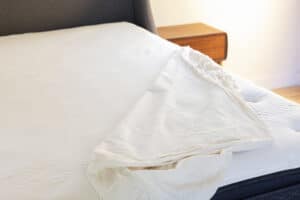
Essential Mattress Protector
100% GOTS-certified cotton mattress protector. The Essential Mattress Protector has an earthy, natural feel. The fitted, lightweight pad is waterproof, machine-washable, and dependable in protecting your mattress from life’s little accidents.
USDA Organic
The United States Department of Agriculture (USDA) Organic certification now aligns more closely with GOTS certification. While it once applied only to raw materials to the point of harvest, it now covers post-harvest processing right through to the final product.
To qualify for USDA Organic certification, a mattress pad or protector must contain and be made with:
- Minimum of 95% organic fibers
- No non-organic fibers
- Only cleaning agents, dyes, and finishes approved under organic regulations.
If a product states it is 100% organic and uses the USDA Organic seal, it must be made purely of organic fibers using only organic processing aids. Some products say ‘made with USDA Organic cotton’, which can mean these contain additional natural fibers and materials not certified organic but that still meet the standard above.
Like GOTS, the USDA Organics seal also covers some environmental requirements, including conservation of water and biodiversity. It doesn’t include social components though. This is why I favor GOTS or recommend buying USDA Organic products that also carry Climate Neutral Certified, Fair Trade, B Corp, and similar certifications to round things out.
eco-INSTITUT
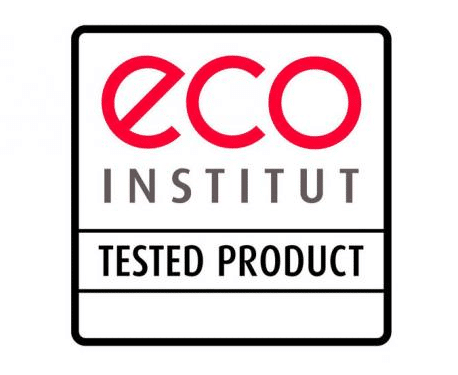
eco-INSTITUT is a top tier certification for me because it is run by an independent organization in Germany that assesses the actual chemical composition and emissions from mattress protectors and pads (among other bedding items).
Unlike MadeSafe, eco-INSTITUT tests the products it certifies, instead of just relying on manufacturers to provide lists of materials and processes.
Unlike GOTS and USDA, though, eco-INSTITUT doesn’t certify that a product is organic.
If a mattress protector or pad is eco-INSTITUT certified, you can be certain it contains no or so low as to not be harmful levels of:
- VOCs
- POPs (persistent organic pollutants)
- Heavy metals (such as lead, antimony, cobalt, copper, and mercury)
- Pesticides (such as Captafal, Perthan, Permethrin, Telodrin, and Toxaphen)
- Formaldehyde
- Phthalates (including no regulated phthalates).
MadeSafe
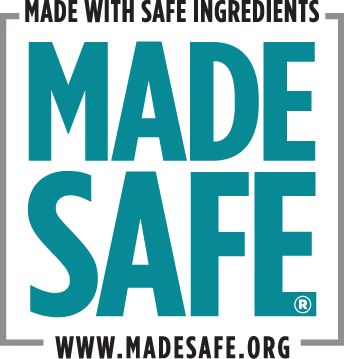
MadeSafe has the potential to be a very robust non-toxic certification but has one major drawback: MadeSafe doesn’t actually test products.
Instead, the independent non-profit organization that runs MadeSafe relies on manufacturers to honestly report the materials and chemicals used to make a final product.
MadeSafe maintains a more extensive list of banned chemicals than any I’ve seen. It also supports companies in switching from toxic or harmful chemicals and materials to safer alternatives.
Assuming that companies are honest, mattress pads and protectors with MadeSafe certification should be free from:
- Behavioral toxins
- Carcinogens
- Developmental toxins
- Endocrine disruptors
- Fire retardants
- Heavy metals
- Neurotoxins
- High-risk pesticides
- Reproductive toxins
- Toxic solvents
- Harmful VOCs.
MadeSafe is a good certification to pair with GOTS organic or USDA Organic as well as things like Fair Trade, Climate Neutral Certified, and B Corp status. That’s because this seal doesn’t include any social or environmental factors beyond the safety of materials and chemicals.
Other certifications to look for when choosing mattress protectors and pads
While I don’t typically recommend mattress pads made with synthetic materials and strongly suggest choosing a mattress protector with no more than a thin layer of polyurethane membrane (which should qualify it for GOTS certification), there are exceptions.
For instance, you may want a mattress pad or protector made with bamboo, or a protector that has fully elasticated and stretchy sides. These will necessitate the presence of some synthetic or semi-synthetic materials, such as bamboo, spandex, and polyester. Ideally, these will be made using closed loop processes and recycled content, which leads us into a whole other realm of certifications.
bluesign®
bluesign® is a Swiss certification program that applies mostly to synthetic or semi-synthetic textiles. For mattress pads and protectors, that can mean bamboo and recycled polyester, as well as other materials.
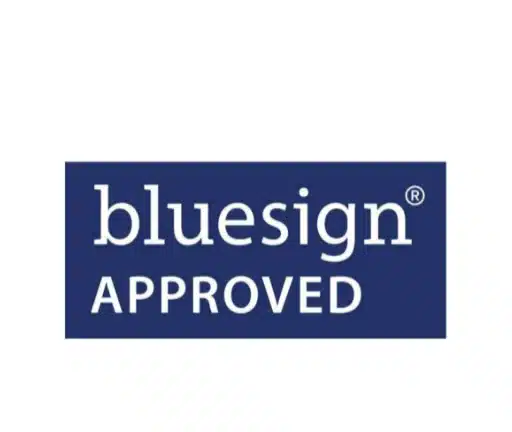
I like the bluesign® system because it covers every step of the supply chain and every part of the bedding. This seal offers assurance that a pad or protector doesn’t contain any toxic chemicals. It also includes elements of worker safety and environmental impact.
You may see ‘Contains materials that meet the bluesign® criteria’ on mattress pads or protectors that contain some bamboo or synthetic materials. For pads and protectors made with materials that all meet the standard, you’ll instead see labeling to the effect of ‘Product meets the bluesign® criteria’.
While I like bluesign, it’s not perfect and can easily mislead well-meaning consumers. Some companies use this seal to greenwash less sustainable products, focusing their attention on a single component of the pad or protector to make it look more eco-friendly than it is.
OEKO-Tex Standard 100
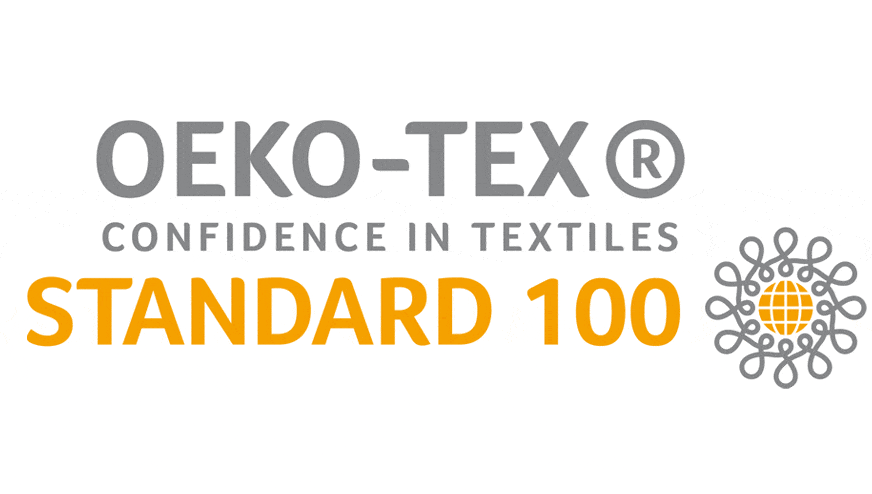
OEKO-Tex is a robust certification that helps differentiate non-toxic and more sustainable pads and protectors containing synthetic and semi-synthetic materials from those that may be harmful to health.
That said, OEKO-Tex certification standard 100 is less strict than bluesign® and GOTS. It is, however, very comprehensive in that it requires actual testing of the product and includes all fabrics, zippers, buttons, threads, and other parts of a pad or protector.
Pads and protectors with Oeko-Tex 100 certification must contain no or low levels of:
- Azo dyes
- Formaldehyde
- Pesticides
- Heavy metals
- PVC.
The limits on several substances are higher with Oeko-Tex than with MadeSafe or GOTS, but you’re unlikely to see Oeko-Tex certification on products made with organic, natural materials. As such, if you are choosing products made with recycled, synthetic, or semi-synthetic materials, look for Oeko-Tex (and check the certification at the OEKO-Tex database).
Better yet, look for Made in Green by Oeko-Tex as this encompasses some social and environmental components.
Made in Green by OEKO-Tex
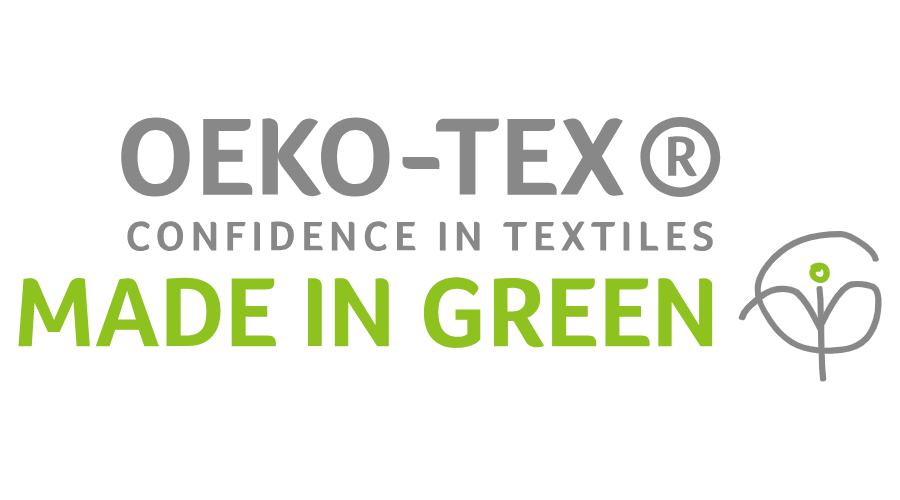
I’m yet to spot a mattress pad or protector that carries Made in Green by OEKO-Tex certification, but I live in hope.
This seal covers products “manufactured using environmentally friendly processes and under socially responsible working conditions”. To qualify, products need to be made in facilities certified by STeP by OEKO-TEX® – basically a sustainable manufacturing certification system.
While MiG isn’t as robust as GOTS and doesn’t mean a product is organic, it’s a good one to look for if choosing synthetic or semi-synthetic mattress pads or protectors.
kbA and kbT
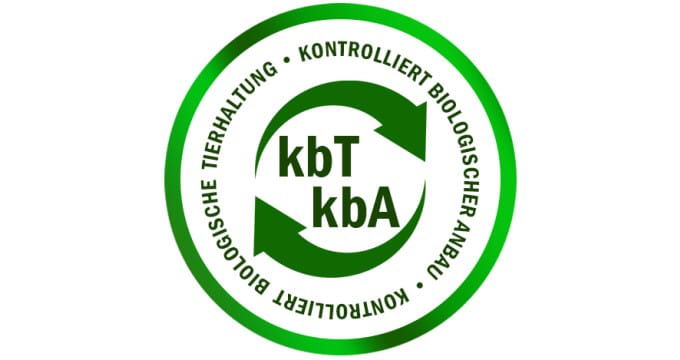
Many mattress pads and protectors include wool because it is naturally water-resistant. There are a lot of wool certifications out there and, forgive the pun, many are a little wooly.
One of the best certifications for wool is the European kb kbT certification. This certifies that the wool comes from ‘controlled organic livestock’ cared for using ‘species-appropriate animal husbandry in harmony with nature’ (R).
kbT certification also means that sheep:
- Aren’t fed any genetically modified foods or fattening aids
- Aren’t forced to reproduce
- Don’t have their tails docked
- Aren’t subjected to mulesing
- Aren’t dipped in pesticides, insecticides, or herbicides
- Don’t graze on land treated with pesticides, insecticides, or herbicides.
If you’re buying a mattress pad or protector made in Europe, check for kbT certification. For wool pads and protectors made in the U.S., look for EcoWool certification, which is the closest thing to kbT, even though it doesn’t certify wool as organic.
EcoWool
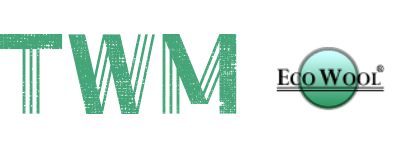
EcoWool is less a certification and more a program for U.S. sheep farmers to market their wool as more humane and eco-friendly.
Under this program, wool from small, local, sustainable farms in the Pacific Northwest is curated and sold under the Premium Eco-Wool™ label.
This wool must come from farms that use healthy and sustainable farming practices for people, land, and non-human animals. To qualify, wool cannot be carbonized or bleached, and no mulesing, pesticide dipping, or overgrazing is permitted.
That said, there’s no third-party, independent oversight of this ‘certification’. As such, it’s best to contact a company and ask more questions about its use of EcoWool if you have concerns.
A note on Responsible Wool Standard (RWS)
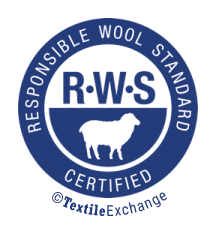
The Responsible Wool Standard (RWS) aims to offer assurance that the wool in a mattress pad or protector comes from sheep that haven’t been subject to cruelty. The standard encompasses:
- Animal welfare
- Land management
- Social requirements (such as worker safety).
While these aims are lofty, my big beef with this standard is that it doesn’t go past the farm gate. That means we can’t know how sheep are treated at end of life, such as how they are transported or slaughtered, nor how the wool was treated after shearing.
There has also been criticism of RWS over its ‘unnanounced’ audits, which it seems to alert farms to 48 hours in advance. Other criticisms focus on the fact that RWS still allows many practices most reasonable adults consider harmful, such as:
- Tail docking
- Ear notching
- Castration
- Tattooing
- Electroejaculation.
Sure, I’m vegan and typically don’t recommend wool products, but I also acknowledge that wool is a fantastic natural materials. As such, if you’re pro wool, look for mattress pads and protectors that carry GOTS, EcoWool, or kbT certification instead of RWS.
Climate Neutral Certified
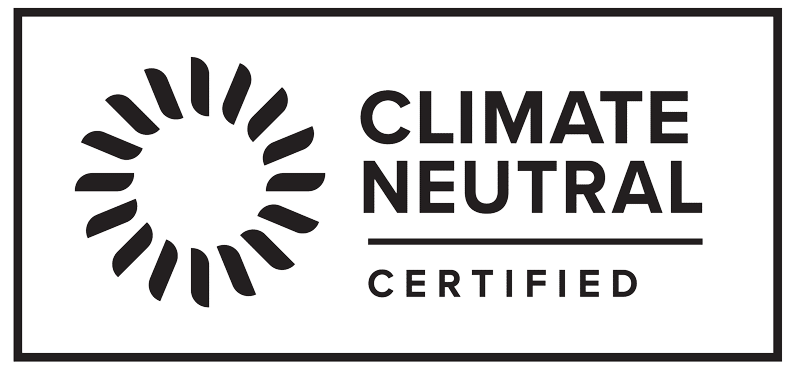
Climate Neutral Certified is a seal companies use when they have worked with this independent non-profit to assess and offset all company emissions. This includes indirect emissions from manufacturing to shipping.
While its purpose is laudable, this certification still relies on companies’ self-assessments of emissions. CNC checks these, but it doesn’t do the assessments itself.
As such, CNC is not quite as robust as it seems, though it is better than nothing.
Fair Trade Certified
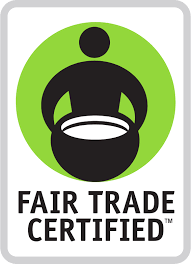
Fair Trade Certified means that a mattress pad or protector was made with:
- No child labor
- No forced labor
- Fair wages
- Safe and ethical working conditions.
The certification also includes environmental elements and requires qualifying companies to invest in the communities producing their products.
B Corp
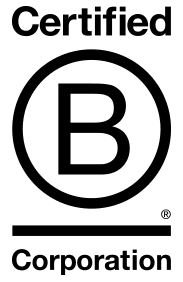
Benefit Corporations (B Corps) undergo third-party audits to assess their performance across a wide range of social and environmental standards. At its most basic, a B Corp is meant to benefit local and global communities and offer a better experience for its workers, customers, and the planet as a whole.
To maintain B Corp status, companies also have to show constant improvement. I find it useful to track a B Corp’s score over the last few years to see if a company is resting on its laurels or walking the talk when it comes to sustainability.
Greenguard Gold
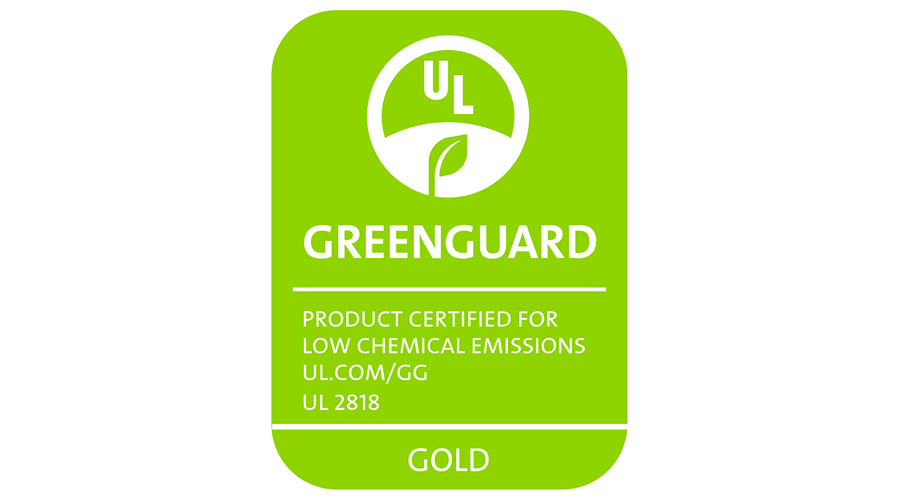
If you’re buying a mattress pad or protector that includes any synthetic materials, Greenguard Gold is a good certification to look for.
This is a well-established emissions standard (like eco-INSTITUT) and offers good assurance that materials such as polyurethane won’t off-gas VOCs and aren’t teeming with formaldehyde and other nasty chemicals.
This certification doesn’t include any social or comprehensive environmental elements, though, so pair it with other certifications for genuine sustainability.

Essential Mattress Protector
100% GOTS-certified cotton mattress protector. The Essential Mattress Protector has an earthy, natural feel. The fitted, lightweight pad is waterproof, machine-washable, and dependable in protecting your mattress from life’s little accidents.
Final thoughts on certifications for mattress pads and protectors
There’s no shortage of subpar, synthetic mattress pads and protectors out there. Knowing which certifications actually mean something can help you sort the green from the greenwashed.
As is the case with many consumer products, some pads and protectors are made by smaller companies that can’t afford the cost of the bigger certifications and seals. As such, if you like the look of a product that doesn’t carry the certifications you’d like to see, I suggest you contact a company directly for more information.
Ask about its materials, sources, and manufacturing processes, as well as any company sustainability initiatives. That way, you can get a good sense of whether the product is eco-friendly and non-toxic and how the company handles customer relations. You may even find that the company is in the process of obtaining certifications or just hasn’t updated its product listings yet.
Alternatively, check out our mattress pad and protector recommendations. To save you the time and effort, I do the legwork of scrutinizing product labels, checking certifications at the relevant databases, and asking companies the in-depth questions about supply chains, materials, processes, packaging, and more.